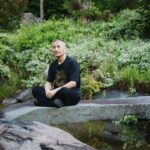
Seeing Is Believing?
As the saying goes, “Seeing is believing.” But, how much of the world can we actually see? Apparently, not all that much, according to scientists. What human beings are capable of seeing is not the totality of what exists.
What is it we do see? According to quantum physics and its understanding of light, most of us can only see one one-thousandth of the light spectrum. The information exists but, generally speaking, human eyes don’t have the capability to see it at this stage of our development. Today, we still acquire knowledge and information primarily through the five senses, especially our eyes. If the ability to see is limited, we have to ask ourselves, “How much am I really seeing? When I decide to believe something, what am I basing it on? Can I see as much as the next person? Do they see things differently from me? The answer is yes!
Your Own Framework
You can only see through your own eyes. Everyone has his or her own angle to look at the external world. For example, it would be difficult to see through the eyes of music or art if you are not a musician or an artist. Certainly, you can appreciate these fields, but your framework will be different. This applies to just about everything. Even this kind of seeing is influenced by beliefs and the knowledge you’ve acquired. Take botany, for example. It is unlikely that an untrained eye would appreciate a tree in the same amount of detail as a trained botanist. You can both look at the same tree and may both be delighted with its flowering pattern. But the botanist has many more points of reference to appreciate the intricacies of the tree.
From Einstein’s relativistic framework, no two individuals see exactly the same event based on their location in space and time. Many people can witness a beautiful sunset, but each person sees their sunset, viewed from their unique position and framework. Even if two people stand side-by-side, their view is different, because they are uniquely different individuals.
Today, most diagnoses are directed to the “space” of a condition, something that can be seen and analyzed. Looking at it from another angle, we recognize that illness is a sign pointing to something deeper and more complex. We have to take into account the impact of space’s inseparable partner–time.
Time
TCM recognizes time as the accumulation of the energetic frequencies of emotions related to the patient’s lifestyle, feelings, spirit and more. This is an inseparable part of their physical condition. The answer lies in energy, where everything is connected. For instance, how should we deal with unbalanced emotions, thoughts, memories or subconscious energies built up over time that have caused a mass or tumor to grow? If a patient doesn’t deal with this aspect, we can only hope to control the condition. Without a deeper awareness, the patient is vulnerable to a recurrence.
When we penetrate to the body’s subatomic levels, there are no individual particles any more. There is only Oneness. At this deep of a level, we lose matter. All there is is energy; nothing can be identified separately anymore. Everything is in a dynamic state. Once we see health from this angle, we realize that there is not just one answer to a health issue. There are many probabilities and possibilities in these invisible interrelationships.
In our Western culture, we often focus on physical symptoms as the ultimate sign of a health problem rather than the effect of an invisible root cause. Just because a symptom has disappeared doesn’t mean the condition is gone. Unless healthy relationship between the organs involved are restored, the symptom will appear again, often in different disguise. But why? Ultimately, conditions are related to spirit, and its purpose in this reality. Your condition is not just a condition, it has a message from your spirit. Can you decode it?
Excerpted from Digesting the Universe: A Revolutionary Framework for Healthy Metabolism Function









